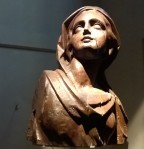 Today is ‘This is Engineering’ day organised by the Royal Academy of Engineering to showcase what engineers and engineering really look like, celebrate our impact on the world and shift public perception of engineering towards an appreciation that engineers are a varied and diverse group of people who are critical to solving societal challenges. You can find out more at https://www.raeng.org.uk/events/online-events/this-is-engineering-day-2020. I have decided to contribute to ‘This is Engineering’ day by describing what I do on a typical working day as an engineer.
Today is ‘This is Engineering’ day organised by the Royal Academy of Engineering to showcase what engineers and engineering really look like, celebrate our impact on the world and shift public perception of engineering towards an appreciation that engineers are a varied and diverse group of people who are critical to solving societal challenges. You can find out more at https://www.raeng.org.uk/events/online-events/this-is-engineering-day-2020. I have decided to contribute to ‘This is Engineering’ day by describing what I do on a typical working day as an engineer.
Last Wednesday was like many other working days during the pandemic. I got up about 7am went downstairs for breakfast in our kitchen and then climbed back upstairs to my home-office in the attic of our house in Liverpool [see ‘Virtual ascent of Moel Famau’ on April 8th, 2020]. I am lucky in that my home-office is quite separate from the living space in our house and it has a great view over the rooftops. I arrived there at about 7.45am, opened my laptop, deleted the junk email, and dealt with the emails that were urgent, interesting or could be replied to quickly. At around 8am, I closed my email and settled down to write the first draft of a proposal for funding to support our research on digital twins [see ‘Tacit hurdle to digital twins’ on August 26th, 2020]. I had organised a meeting earlier in the week with a group of collaborators and now I had the task of converting the ideas from our discussion into a coherent programme of research. Ninety caffeine-fuelled minutes later, I had to stop for a Google Meet call with a collaborator at Airbus in Toulouse during which we agreed the wording on a statement about the impact our recent research efforts. At 10am I joined a Skype call for a progress review with a PhD student on our dual PhD programme with National Tsing Hua University in Taiwan, so we were joined by his supervisor in Taiwan where it was 6pm [see ‘Citizens of the World’ on November 27th, 2019]. The PhD student presented some very interesting results on evaluating the waviness of fibres in carbon-fibre composite materials using ultrasound measurements which he had performed in our laboratory in Liverpool. Despite the local lockdown in Liverpool due to the pandemic, research laboratories on our campus are open and operating at reduced occupancy to allow social distancing.
After the PhD progress meeting, I had a catch-up session with my personal assistant to discuss my schedule for the next couple of weeks before joining a MS-Teams meeting with a couple of colleagues to discuss the implications of our current work on computational modelling and possible future directions. The remaining hour up to my lunch break was occupied by a conference call with a university in India with whom we are exploring a potential partnership. I participated in my capacity as Dean of the School of Engineering and joined about twenty colleagues from both institutions discussing possible areas of collaboration in both research and teaching. Then it was back downstairs for a half-hour lunch break in the kitchen.
Following lunch, I continued in my role as Dean with a half-hour meeting with Early Career Academics in the School of Engineering followed by internal interviews for the directorship of one of our postgraduate research programmes. At 3.30pm, I was able to switch back to being a researcher and meet with a collaborator to discuss the prospects for extending our work on tracking synthetic nanoparticles into monitoring the motion of biological entities such as viruses and bacteria [see ‘Modelling from the cell through the individual to the host population’ on May 5th 2020]. Finally, as usual, I spent the last two to three hours of my working day replying to emails, following up on the day’s meetings and preparing for the following day. One email was a request for help from one of my PhD students working in the laboratory who needed a piece of equipment that had been stored in my office for safekeeping. So, I made the ten-minute walk to campus to get it for her which gave me the opportunity to talk face-to-face with one of the post-doctoral researchers in my group who is working on the DIMES project [see ‘Condition-monitoring using infra imaging‘ on June 17th, 2020]. After dinner, my wife and I walked down to the Albert Dock and along the river front to Princes Dock and back up to our house.
So that was my Engineering Day last Wednesday!
 The DIMES project has received funding from the Clean Sky 2 Joint Undertaking under the European Union’s Horizon 2020 research and innovation programme under grant agreement No. 820951. The opinions expressed in this blog post reflect only the author’s view and the Clean Sky 2 Joint Undertaking is not responsible for any use that may be made of the information it contains.
The DIMES project has received funding from the Clean Sky 2 Joint Undertaking under the European Union’s Horizon 2020 research and innovation programme under grant agreement No. 820951. The opinions expressed in this blog post reflect only the author’s view and the Clean Sky 2 Joint Undertaking is not responsible for any use that may be made of the information it contains.


